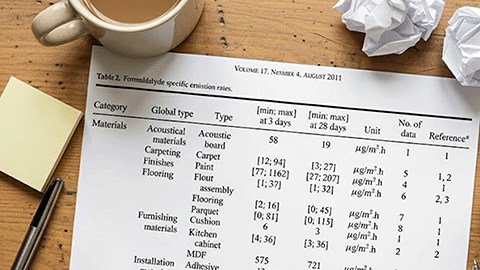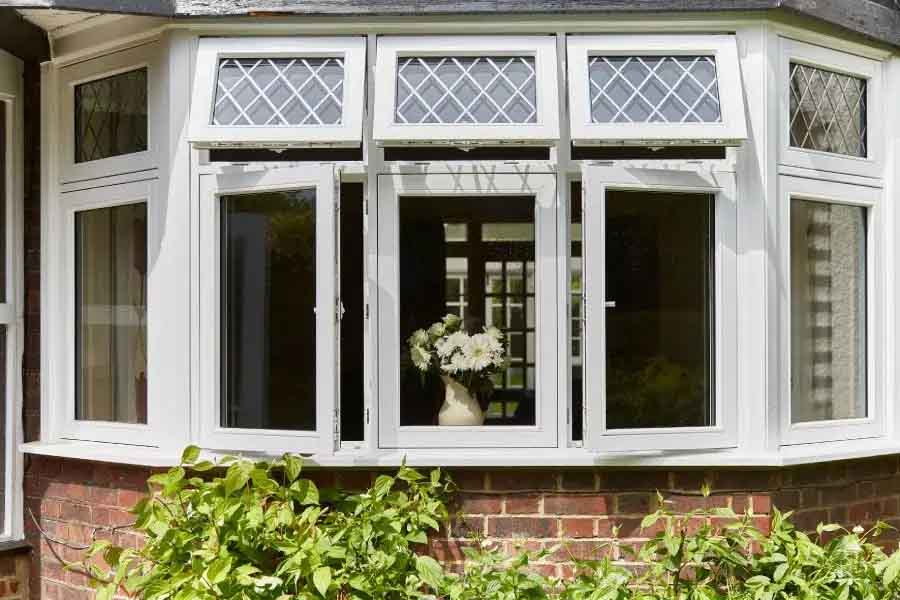The UVGI Explainer: How it Works, Benefits & Solutions
Though UV has been known to kill microbiological contaminants for years, its use in improving indoor air quality needs a deeper understanding before application. Facilities managers and property owners often come to us with questions around what ultraviolet germicidal irradiation (UVGI) is, how it works and why they should use it.
If you’ve heard you should be using UVGI in your HVAC system, this comprehensive guide will help you understand the ins and outs so you can choose the right solution for optimising your indoor air quality.
Contents:
- UVGI resources
- The ultraviolet germicidal irradiation (UVGI) story
- What is UVGI?
- How does UVGI work?
- Applications of UVGI
- UVGI benefits
- UVGI pitfalls
- UVGI solutions
Further UVGI resources
We have several articles and guides on our site to help you learn about how ultraviolet germicidal irradiation works, how to install it and how it compares to other air cleaning solutions. There are links throughout this page, but we've also compiled them here:
- How to Select and Install the Right UVGI Solution for Your Building
- UVGI vs Bipolar Ionisation in Non-Residential Buildings
- UV vs HEPA Filtration
- UV Air Purifiers: Do They Work?
- UV Lamp Systems: Why They Need a Ballast
The UVGI story
As far back as the 1870s, the shorter wavelengths of ultraviolet light were studied and confirmed to be a disinfectant and steriliser of microorganisms, but it took several decades of scientific research and technological advancement before ultraviolet germicidal irradiation (UVGI) became an accepted practice for indoor air decontamination.
Since the 1940s, UVGI had periods of popularity and decline, coming into use to fight the spread of measles in schools, tuberculosis, and most recently Covid-19.
Today, UVGI is a well-established method to irradiate the indoor air circulating in commercial facilities such as hospitals, food production facilities and office buildings. Elsewhere it’s used for water treatment, including swimming pools, and disinfecting surfaces in healthcare and public areas, for example the escalator handrails at train stations.
What is UVGI?
Ultraviolet germicidal irradiation (UVGI) is the application of UV-C light on surfaces, air and water to inactivate or kill microorganisms and pathogens. Including bacteria, moulds, viruses and yeasts that can spread disease or impact occupant experience.
There are many kinds of UVGI devices to select and install in your building, depending on the level of contamination in any given space. A good provider will pinpoint the correct location, energy and number of bulbs required to get to the optimal kill rate.
Read the full article: How to select and install the right UVGI solution for your building
How does UVGI work?
Within UV there are short and long wavelengths, UV-A, UV-B and UV-C, but it is UV-C that is proven to kill or inactivate germs by attacking their DNA so it cannot reproduce.
A more interesting question for people trying to disinfect their buildings in an energy efficient, cost effective way is how does it work best?
To get optimum results from your UVGI solution, you must ensure that as much air in your building as possible is exposed to the UV-C light to inactivate the most microbes. This means the slower it moves and the higher the volume of air comes into contact with the light, the better. Choosing the right power level and the right location is critical to its success.
It’s worth noting that UVGI does not work against particulate matter or VOCs, which means you can still have bad air in your building from air pollution and chemicals. To cover all your bases, we recommend using UVGI in conjunction with other solutions, such as bipolar ionisation.
Read the full article: UVGI vs Bipolar Ionisation in Non-Residential Buildings
Applications of UVGI for indoor air quality
UVGI can disinfect surfaces, liquids and the air. Surface disinfection is often used in places such as medical operating theatres and food preparation.
UVGI in water treatment is a well accepted practice, with both drinking water and wastewater UV treatment facilities catching those microorganisms resistant to chlorine and fluoride. This means a decreasing need for chemicals that harm the environment (and less eye-stinging chlorine in modern swimming pools.)
More relevant to our expertise however, is indoor air quality. There are four main ways to use UVGI for cleaning out airborne microorganisms and improving IAQ.
1. In AHU
By placing the solution in the AHU, you irradiate the air within the HVAC system, long before it reaches your building’s occupied spaces. As the location is centralised, it will disinfect the air in all spaces connected to the HVAC system with one UVGI unit.
When used in conjunction with fans and filters, UVGI has been proved highly effective in improving indoor air quality. Fans force the air past the lamps and microorganisms and pathogens are inactivated by the light. While not all will be caught by the filters, those that do make it through will be inactivated and unable to reproduce, leaving only decontaminated air to reach the room.
The surface cleaning aspect of UVGI also works here by disinfecting fan coils and drip trays in HVAC systems.
It’s always preferable to place your UV-C lamps in the AHU, because the air is moving slower and so has more contact time with the UV light to inactivate the biologicals. It’s not always possible, however, for example if your AHU has no more room or you are retrofitting. In this case, you need to look for space elsewhere in the HVAC system, such as in-duct.
2. In-duct UVGI
As with the AHU, this method is also placed in the HVAC system; it just moves location closer to the target spaces. With UV-C lamps placed inside ducts instead of an AHU, this means you may need to install multiple units depending on where the ducts lead, and how many rooms you want to impact. This is a good option for organisations only using a part of a building that does not have UVGI already installed in its AHU, such as multi-tenant offices.
3. Upper-room UVGI
This uses wall mounted devices to disinfect the room in the upper half of a room, with tests to make sure the UV does not directly shine on occupants in the lower half. However, this relies on constant vertical movement of air to irradiate the entire room, and each unit only covers approximately 35m2, which means you will need a large number of devices and lamps to cover a large space.
4. UV air purifiers
These self-contained room air disinfection units are placed inside a room, or mounted on a wall. They are effective, but only as much as the air passes through the device, which requires a consistent airflow and a good fan. With multiple models, selecting the right one for the space is important or else it will have little impact on air quality. These devices should be sized to add an additional two air changes or meet 2CADR requirements for room size.
Read the full article: UV Air Purifiers: Do They Work?
UVGI benefits
High effectiveness
UVGI has been around for a long time, and has been proven to kill or inactivate pathogens throughout the twentieth century to today. We know it works. The only question that needs asking is the dose needed to disinfect a space. All applications should be run on a case-by-case basis, using inactivation strength as prescribed by the IUVA.
Chemical free
UVGI is a purely physical solution, using only electricity and UV-C light to kill pathogens. No chemicals or other molecules are introduced into the air.
Recommended by ASHRAE and Approved Document F
US ventilation body ASHRAE has created a design guide (in ASHRAE 62.1) for effective UVGI upper-room and HVAC application. While there is no official UK design guide, the UK body CIBSE and ASHRAE share knowledge and practices so it is safe to follow ASHRAE 62.1 when designing a UVGI system in UK buildings.
In Approved Document F of the Building Regulations, UVGI is named alongside HEPA filters as a recommended solution for disinfecting recirculated air:
1.37 Ventilation systems that, under normal operation, recirculate air between more than one space, room or zone should also be able to operate in a mode that reduces the risk of the transmission of airborne infection. This can be achieved by…
b. Systems incorporating a UV-C germicidal irradiation system that is able to disinfect the air that is being recirculated. This type of system is commonly located within the heating, ventilation and air conditioning (HVAC) system or ductwork.
So, you can rest easy knowing that UK legislation approves the use of UVGI.
Also notable is the cost advantage of using UVGI over HEPA filters. While HEPA are an excellent way to reduce pathogens, they can be difficult to retrofit as they add a large amount of pressure to the system, with which the AHU may not be able to cope (without a costly refurbishment).
Low maintenance
UV bulbs last for at least 10,000 hours – the bulbs we use at ARM Environments run for as much as 16-18,000 hours – meaning your system only needs occasional checks. And because the bulbs can be positioned so they are continually cleaning your fan and cooling coils and drip trays, you do not need to manually clean your HVAC system as often. As UV prevents the build-up of organic matter here, it maintains heat exchange efficiency, airflow uniformity and reduces pressure drop across the coils.
UVGI Pitfalls
Not for every problem
We mentioned earlier that UVGI does not filter out particulate matter or VOCs. Which means you can still have PM 2.5 and PM 10 coming from outside, and VOCs going unchecked in recirculated air, unless you combine UVGI with other solutions.
Energy consumption
Though they do not consume heavy amounts of energy, the lamps are always on and using more energy than other solutions such as bipolar ionisation. This is why it's important to conduct a full survey so you know exactly what type of air cleaning solution is needed in which parts of your building. It will save you money in the long run.
Needs good air movement
UV can only irradiate the air that flows within reach of the UV photons. This means the correct placement of your UV-C lamps is paramount, and why we recommend installing them in your HVAC system to maximise the amount of air passing your lamps.
Read the full article: How to select and install your UVGI solution
Requires expertise
It’s tempting to skip the assessment stage and simply buy a UVGI solution and install it across your building. Unfortunately, this could mean paying a high price for an ineffective system. By conducting a proper survey to understand where pollutants are highest in your building, as well as where ventilation is poorest, you can choose the correct device for the job.
UVGI solutions
Over the years we have worked with many ultraviolet germicidal irradiation solutions for irradiating air and surfaces. Today we provide our clients with two products: Torpedo and Crossbow.
Torpedo
- Air treatment system that uses 254nm ultraviolet radiation to disable microorganisms and biological contaminants.
- In-duct disinfection destroys contaminants as they pass through the duct.
- The module consists of four high-output UVC lamps mounted on a custom-designed polished aluminium reflector.
- Mounted parallel to the air stream in order to maximise the contact time of the contaminants with the UVC energy, cleaning the air as it flows past the UVC lamps.
- Requires about 1.8m of straight section of the duct and comes with all required fittings.
- Designed to work in ductwork where air velocities are higher.
- A cleaner, more efficient system that prevents the spread of disease and contaminants and reduces overheads while conserving natural resources by reducing energy consumption.
Crossbow
- Air and surface treatment system which uses 254nm ultraviolet radiation to disable microorganisms and biological contaminants.
- Typically mounted inside the Air Handling Unit.
- An adaptable system – lamps can be added to provide the correct dosage to inactivate contaminants.
- Can be mounted to clean cooling coils, disinfect air in a mixing box section or the return air section of an Air Handling Unit.
If you would like to learn more about how our UVGI products and services can help you, please get in touch for a free consultation.
FAQs
What is UVGI in simple terms?
UVGI is the use of UV-C light to inactivate microorganisms in air, water, and on surfaces, preventing them from reproducing. It targets bacteria, viruses, moulds, and yeasts, making it a reliable method for reducing airborne infection risks in buildings.
How does UVGI actually kill microorganisms?
UVGI works by damaging microbial DNA or RNA so the organism cannot replicate. For HVAC applications it is most effective when airflow is slow and exposure time to the lamps is long, which is why placement and power selection matter.
Where is UVGI used in buildings?
UVGI is placed in air handling units (AHUs), ducts, upper-room installations, or standalone UV air purifiers. Each option suits different layouts, but AHU installation often provides the best contact time and widest coverage. If you're considering upgrading your AHU with a UVGI system, you can learn more about our service here or contact us directly for expert guidance here.
Does UVGI remove particulates or VOCs?
No, UVGI only inactivates biological contaminants, so particulates and VOCs require separate filtration or sorption technologies. Many facilities combine UVGI with HEPA or other air cleaning systems. We offer both high-quality filter replacements and UVGI upgrades for any building to maximise your air quality and keep microbes, particulates, and VOCs to a minimum.
How effective is UVGI compared with other solutions?
UVGI is highly effective for biological contaminants and widely evidenced across hospitals, schools, and commercial buildings, and we have been installing and maintaining these systems in healthcare facilities for many years. It does not add chemicals, has low maintenance requirements, and is supported by ASHRAE 62.1 and UK Approved Document F for recirculated air disinfection.
Should I invest in UVGI?
UVGI is an excellent choice if your building needs continuous control of airborne microorganisms and has a ventilation system suitable for UV-C installation. It’s effective, low maintenance, and chemical free, making it ideal for high-occupancy or recirculated-air spaces. If your main issues are particulates or VOCs, UVGI won’t solve those alone, so combining it with filtration gives better overall results. For tailored advice, contact us here and ask for information on our UVGI installation service.





